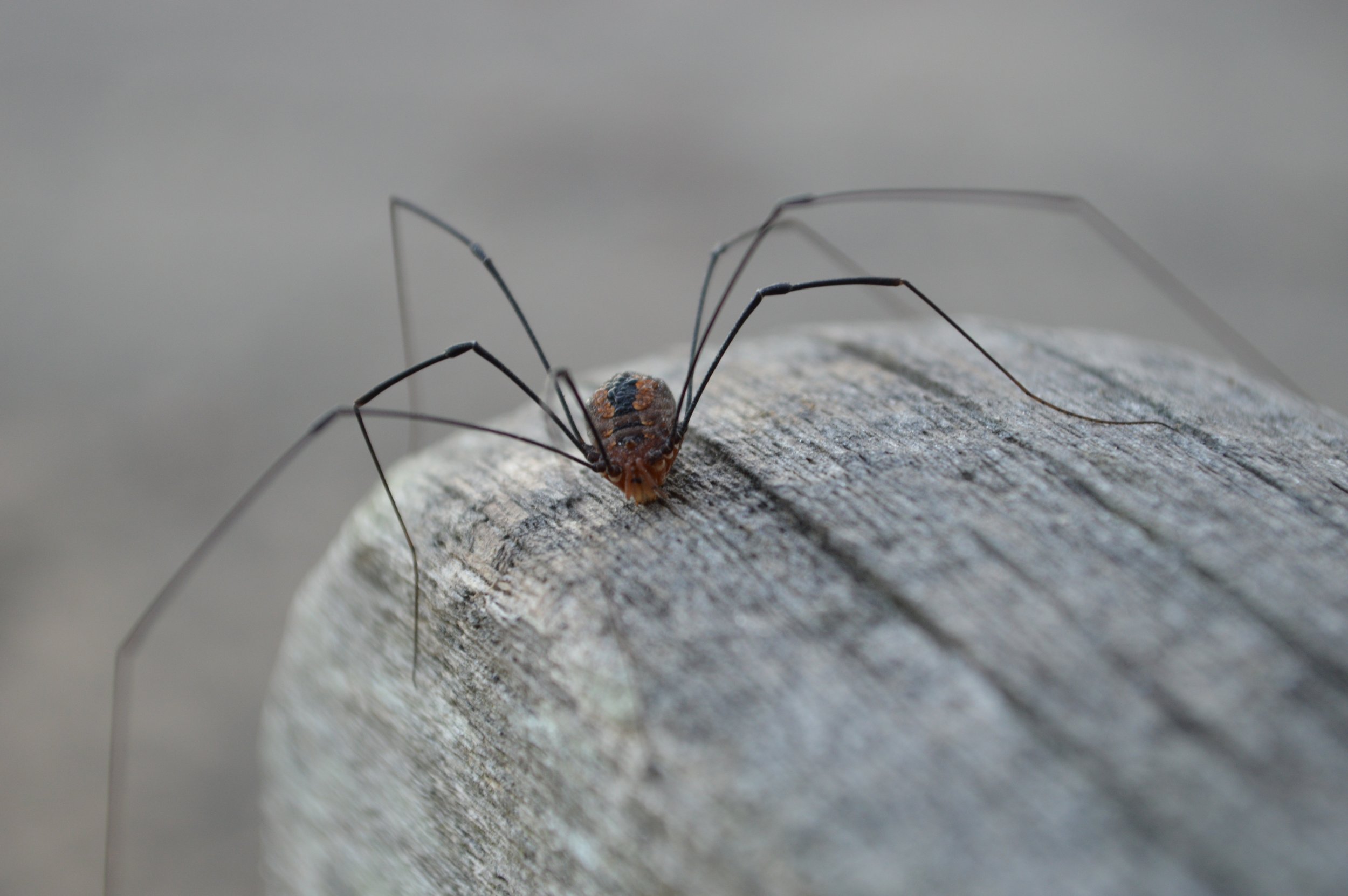Creature Feature: Harvest Season
The harvestman aka daddy long legs.
Welcome back to the start of the new school year! That time of year where the back-to-school sales are numerous and display all things school, such as those multicolored folders that everyone connects to a particular subject (my take: Green = Science, Red = Math, Blue = Social Studies, and Yellow = Language Arts). The month of September not only represents the beginning of school, but also represents the start of the Fall season. Fall is the time of year where many fruits and vegetables are collected in the form of a harvest. Now, this month’s creature is not necessarily linked to crops, but is instead associated solely by name since some believed that the beginning of fall was the time of year where these creatures were most frequently seen.
The harvestmen, as they are called, are very common arthropods of the Opiliones (opilio being the Latin word for shepard) order that many have observed at some point in their lives. However, not many call them by that name, and instead refer to them by the far more common daddy longlegs, despite it being a bit of a mystery as to how they got this name. Since they have four pairs of legs, they fall under the category of arachnids. To be clear, even though they are arachnids they are not spiders, believe it or not! All spiders are arachnids, but not all arachnids are spiders. Besides the harvestmen, this group also includes scorpions, mites, ticks, really anything that has eight legs.
What is it that makes a harvestman different from a spider? There are few ways to differentiate between the two. One of the easiest ways is by comparing body shape. Let us start off with insects as an example: an insect's main body is composed of three distinct body parts: a head, a thorax, and an abdomen. A spider, although it has a distinct abdomen, has its head and thorax fused together, this is known as a cephalothorax. This makes spiders have two parts instead of three. Now, we turn to the harvestmen, which have their abdomen and cephalothorax broadly connected, forming what appears to be just one round body part. A second way is by counting the number of eyes present. Spiders generally have four pairs of eyes while harvestmen only have one.
Years ago, I would hear from peers that these “spiders” were the most venomous arachnids on the planet, but they are safe for humans because their fangs are too small for us. The problem is that they are not spiders …and they produce neither silk nor venom… Shear (2009) composed a thorough article about harvestmen and their biology, physiology, and life history and even gives a theory as to why so many mistakenly believed them to be venomous.
In reality, harvestmen can be both predators and scavengers, with one of their defense mechanisms being secreting chemicals from scent glands. This method of living has clearly benefited the harvestmen since there have been harvestmen fossils found in 400 million-year-old chert rock deposits (see Dunlop et al., 2003), and from fossils dating back to the Jurassic period that are seemingly similar to what modern-day harvestmen look like today (see Huang et al., 2009).
The next time you spot a harvestman, you might notice some tiny bright red dots on the body. These are mites, and some theorize that they may be parasitic on harvestmen. Or maybe they are just hitchhiking, the jury’s still out and is left open for future scientists and researchers to discover.
Click here to learn more about the harvestmen
References and Further Readings:
Dunlop, J., Anderson, L., Kerp, H. et al. Preserved organs of Devonian harvestmen. Nature 425, 916 (2003).
https://doi.org/10.1038/425916a
Huang, D., Selden, P.A. & Dunlop, J.A. Harvestmen (Arachnida: Opiliones) from the Middle Jurassic of China. Naturwissenschaften 96, 955–962 (2009).
https://doi.org/10.1007/s00114-009-0556-3
Shear, William. (2009). Harvestmen. American Scientist. 97. 468. 10.1511/2009.81.468.
https://www.researchgate.net/publication/275701426_Harvestmen
Submitted by Zach Mork, Naturalist, August 2022


